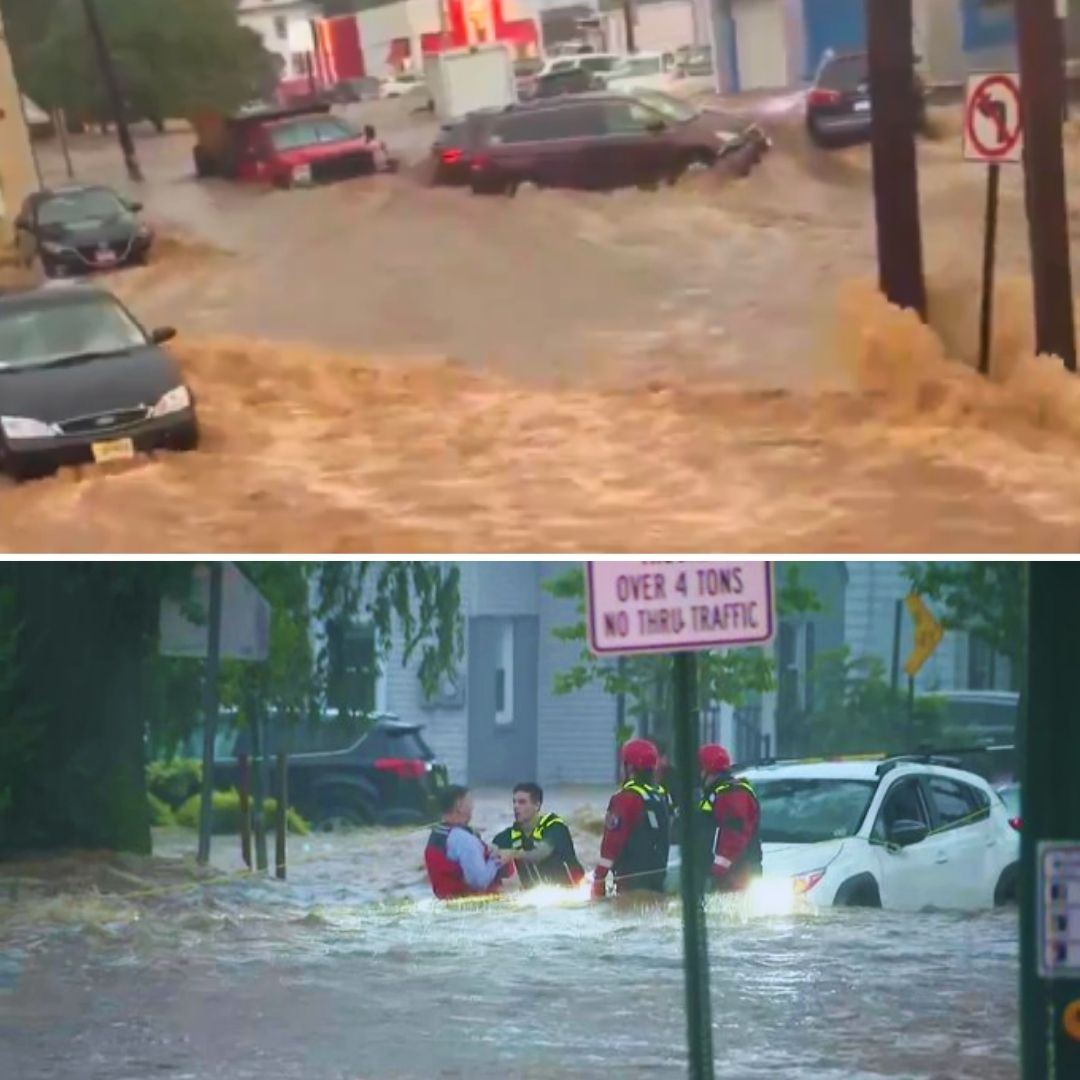On July 14, 2025, New Jersey was battered by historic flash flooding after slow-moving thunderstorms unleashed between 4 and over 6.5 inches of rain across the state within a few hours. The extreme weather event overwhelmed drainage systems, caused widespread disruptions in public transit including delayed buses and trains, and forced Newark Liberty Airport to cancel numerous flights.
Governor Phil Murphy declared a state of emergency for all 21 counties to expedite response and recovery efforts. Tragically, two lives were lost when floodwaters swept away a vehicle in Plainfield. Emergency responders continue to work tirelessly as officials warn of ongoing unsettled weather and advise residents to exercise caution.
Historic Rainfall Devastates Communities, Disrupts Services
Northern and central New Jersey experienced unprecedented rainfall, with Clark Township recording 6.67 inches — surpassing typical monthly averages in just hours. Governor Murphy described the storm’s impact as “crushing,” with communities hit by two intense waves of rain that flooded roads, submerged vehicles, and caused property damage. In North Plainfield, a natural gas explosion amid the floods exacerbated the crisis.
Public transit was severely affected as flooded tracks and roads resulted in bus and train delays, while Newark Liberty Airport faced multiple flight cancellations, compounding travel chaos. Officials urged citizens to avoid unnecessary travel and heed safety advisories as rescue operations remained active. Nearby New York City also felt the impact, with subway stations inundated by floodwaters, demonstrating the regional scale of the event.
Contextualising the Flooding Within a Changing Climate
Meteorologists classify the July 14 rainfall as a 100-year event, reflecting its rarity and severity. Experts link such intense, rapidly accumulating precipitation to the increasing frequency of extreme weather — a consequence of climate change.
This flash flood is among the most significant in New Jersey’s recorded history and places intense strain on infrastructure designed decades ago. Despite efforts to quickly resume transit services and open major roadways, the incident reflects the urgent need for modernised, climate-resilient urban planning.
The federal government is coordinating with state officials to provide assistance as communities begin the daunting process of cleanup and rebuilding, preparing as further storms linger on the horizon.
The Logical Indian’s Perspective
The flash flooding in New Jersey is a stark reminder that climate change is transforming weather patterns globally, making disasters more frequent and devastating.
The Logical Indian emphasises the necessity of proactive, science-based policies that strengthen community resilience and protect vulnerable populations. Beyond governmental action, fostering a culture of preparedness and empathy within communities is vital to weathering these crises.
I’ve never seen flooding like this in Jersey. New Providence, NJ pic.twitter.com/kIe6OJ9Y7j
— Kyle (@kczar18) July 14, 2025











